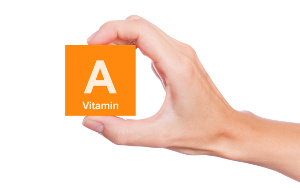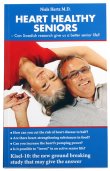Still good reasons to take vitamin D
 In 2012 a Danish study was published in order to determine a possible correlation between, among others blood levels of vitamin D and deaths from all causes. This study has unnecessarily scared some from taking supplements of vitamin D, despite the fact that it showed that more than half of the participants suffered from vitamin D deficiency, and that only a minority had a very high vitamin D level, which not necessarily is the course of increased mortality.
In 2012 a Danish study was published in order to determine a possible correlation between, among others blood levels of vitamin D and deaths from all causes. This study has unnecessarily scared some from taking supplements of vitamin D, despite the fact that it showed that more than half of the participants suffered from vitamin D deficiency, and that only a minority had a very high vitamin D level, which not necessarily is the course of increased mortality.
The study was a Danish population study including 247,574 participants published in the journal JCEM (1) with the participation of people from the Copenhagen area and the curve that reflects the relationship between blood vitamin D content and deaths is "J" shaped and shows that too little vitamin D gives high risk of death and very high levels increases mortality slightly - or so it appears.
- The evidence that low vitamin D levels increase mortality is strong. Those with very little vitamin D, i.e., a concentration of 10 nmol of vitamin D per liter of blood had an increased mortality rate of 131%.
- The evidence that high vitamin D levels increase mortality, on the other hand is weak. Those with blood levels above 140 nmol /l. had an apparent increase in mortality of 42%.
Weaknesses of the study
"Apparent" because the study is not able to elaborate on the reason why high levels of vitamin D in the blood would increase mortality. Also, when it comes to a population study, there will always be some uncertainty associated with this method. Very sick people, people with cancer, multiple sclerosis and other diseases with a high mortality rate, for example, more often take high doses of vitamin D, which will cause the J-shaped curve concerned here.
Incidentally we do not know if those who had a very high vitamin D levels in the blood, had received vitamin D injections at their doctor, where the dose usually is very high.
Since there were relatively few participants in the group with more than 150 nmol/l of vitamin D in the blood compared to the number of participants with levels between 25-50 nmol/L in the blood, the statistical certainty drops for the group with the highest levels of D vitamin in the blood which is also seen on the graph curve.
Controlled studies have been made that used very high doses of vitamin D, which did not show adverse effects.
Because of the northern location of Copenhagen there will be considerable differences in the vitamin D content of Copenhagen residents depending on the time of year, and since we can not expect that all blood samples were taken at the same time of year, it weakens the result.
Another weakness of the JCEM study was that blood vitamin D content was measured only once in seven years. In addition, changes in lifestyle are easily able to modify the blood's vitamin D content in the course of such a long period, which also weakens the result og the study.
EFSA safe limits for intake
Later the same year (2012) after the JCEM study was published, EFSA's experts published, after a long-term evaluation, new safe upper limits for intake of vitamin D, abbreviated "UL"(2). You have to understand this UL value as the dosage, that anyone in the general population can consume without recommendation from a doctor and be guaranteed by the EU nutritionists that this dosage will be safe. These new UL values were:
- Max for 0-1 years: 25 mcg
- Max for 1-10 years: 50 mcg
- Max for 11-17 and adults: 100 mcg
These new UL values that also had included deaths from all causes in their safety assessment were now twice as high as the previous ones.
Refs.
Durup D, et al. A Reverse J-Shaped Association of All-cause Mortality with Serum 25-Hydroxyvitamin D in General Practice, the CopD Study. J Clin Endocrinol Metab. 2012;97(8):2644-52.
EFSA Panel on Dietetic Products, Nutrition and Allergies (NDA. Scientific Opinion on the Tolerable Upper Intake Level of vitamin D. EFSA Journal 2012;10(7):2813.
- Created on .











 "After about one week of taking the Q10 supplement I could feel a huge difference," says 23-year old Alan Piccini, who has been suffering from extreme fatigue and muscle aches ever since he was a child.
"After about one week of taking the Q10 supplement I could feel a huge difference," says 23-year old Alan Piccini, who has been suffering from extreme fatigue and muscle aches ever since he was a child. “Taking capsules with co-enzyme Q10 has freed me of the severe side effects of my cholesterol lowering medicine,” Mrs Franken explains.
“Taking capsules with co-enzyme Q10 has freed me of the severe side effects of my cholesterol lowering medicine,” Mrs Franken explains.